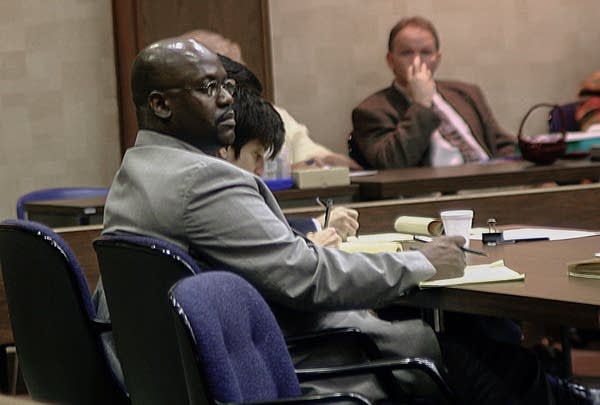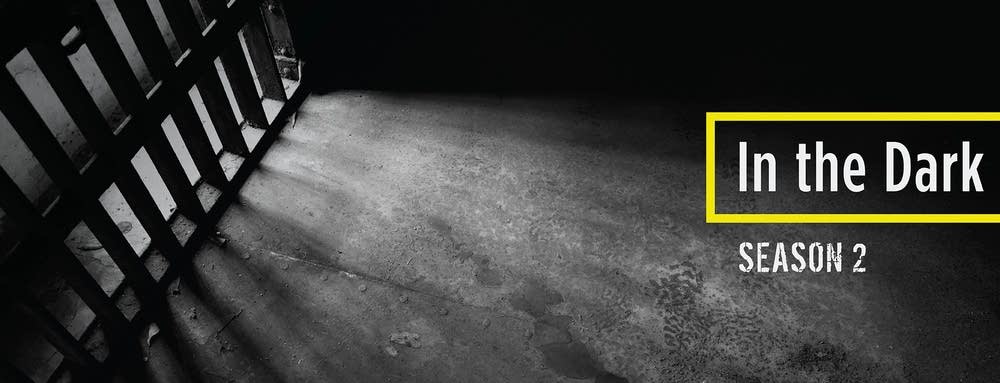Can People Be Trialed Again With New Evidence
The answer to this question involves one person: the local commune chaser. He or she has broad discretion over whether to take a case to trial, or, in the Curtis Flowers case, to repeated retrials.
If a prosecutor takes a criminal case to trial and the defendant is found not guilty, then information technology'due south over. The Fifth Amendment to the U.S. Constitution forbids the government from re-prosecuting someone for a criminal offence once they've been acquitted — this is commonly known as double jeopardy.
Simply what's happened in the Flowers case is dissimilar. Flowers has never been acquitted. In his first 3 trials, he was convicted. Those convictions were afterward thrown out past an appeals court, which ruled that the prosecution fabricated disquisitional mistakes. Each time, the guilty verdict was essentially erased from the books, and the case went dorsum to the starting time. The next two juries — in trials four and 5 — never reached a verdict. They just deadlocked and the proceeding ended in a mistrial.
Subsequently each i of these starting time five trials, the prosecutor in the case, Doug Evans, had a pick to brand. Would he drib the murder charges confronting Flowers and release him or try again to convict him? And each time, Evans, who'south been in function for more two decades, chose to endeavor Flowers again. The 6th trial's guilty verdict has so far held up.
Double jeopardy doesn't apply because, in effect, Flowers hasn't endured 6 trials for the same criminal offense. He's just had a get-go trial — six times.
In that location'due south zilch in the law that bars a prosecutor from doing this — from retrying a case when the jury hasn't reached a unanimous verdict or a conviction hasn't stuck. That said, there'due south nothing that requires a prosecutor to try a case over and over again, either — and about don't.

How oftentimes does this happen?
No one tracks instances of repeated prosecutions at a national level. Even at a local level, these cases live on mostly in the memories of the attorneys and clerks that handled them. We conducted an informal poll of country prosecutors, defence attorneys, legal scholars, lawyers' associations, and ceremonious rights organizations. Had whatever of them heard of someone, other than Curtis Flowers, being tried half-dozen times for the same criminal offence? The answer was unanimous: Nope.
There are some examples if you dig. Between 2000 and 2005, a Mississippi human being named Marcus Roberson was brought to trial eight times on murder charges. Only five of those trials actually reached the jury deliberation stage. The other three were declared mistrials at the outset. After the last mistrial, Roberson pled guilty to manslaughter. Multiple prosecutions do happen, only they are rare.
"At that place's an unspoken rule that three times is sort of the max," said Hermann Walz, a quondam assistant commune attorney in New York City and professor at John Jay Higher of Criminal Justice. "After 3, about prosecutors decide that the evidence merely isn't there."
Walz said that certain factors tin can encourage a prosecutor to endeavour a case a second or third fourth dimension. If only 1 or two holdouts prevented the jury from reaching a guilty verdict, the case may still seem solid. If the jury convicted the defendant simply that conviction was overturned on procedural grounds, a prosecutor might experience that correcting those errors and trying once more is part of his duty to protect the public from a potentially unsafe criminal.
There tin be upsides to a do-over. "Usually the second time around it gets amend for the prosecution," said Melba Pearson, deputy director of the Florida ACLU and a long-time prosecutor in Miami-Dade Canton. "Y'all're presenting the same evidence, y'all kind of know what worked and what didn't."
But multiple trials can likewise rack up costs in taxpayer dollars, jurors' time, and stress on victims and their families. And the case itself starts to autumn apart. "By the third fourth dimension trying the instance, you're losing witnesses," Pearson said. "People retire, people pass away, people move, people say, 'Yous know what, I'm fed up, I don't want to be a part of this anymore, don't call me.'"

So why go on pushing?
"The stated reason to re-prosecute a instance is most e'er a continued belief that the private is actually guilty of the crimes charged," said John Hollway, executive director of the Quattrone Center for the Fair Administration of Justice at the Academy of Pennsylvania Law School. "What's more than difficult to parse is any potential unstated rationale."
Political pressure level to prosecute tin be immense. In nearly every jurisdiction in the United States, commune attorneys are elected officials. Failure to secure convictions tin sink an upcoming campaign. This is especially true in high-profile cases, where the victims are prominent citizens or outspoken advocates or the crime is particularly heinous.
"When confirmation bias toward the land's theory of the crime combines with the psychological fear of embarrassment or mistake ... it is piece of cake to see how even a well-intentioned prosecutor might cling desperately to actual guilt as a rationale for standing to prosecute the case," Hollway said.
And when a prosecutor does cling to a case, there are only a few ways to put an cease to it — all of them hard to come by.
The first is a judicial finding, frequently past an appeals court, of actual innocence — when there'due south new evidence or a Dna exoneration, for case. The second is an acquittal in a retrial. The third is a successful movement past the defence force to get the prosecutor disqualified from pursuing the case whatsoever farther.
"The statement would be, 'Hey, if this had been a off-white trial, this guy would be acquitted and double jeopardy would utilize," Hollway said. "The defense attorney is basically saying, 'Come on. You lot don't get to misbehave and so retry the guy.'"
Before Curtis Flowers' third trial, his defense team attempted something forth these lines. Chaser John Gilmore wrote a motion that was the first procedural pace toward having Evans removed from the instance. Gilmore cited legal precedent for disqualifying a prosecuting attorney in a case where he's shown bias or has engaged in serious misconduct.
The judge, Clarence Morgan, didn't have much time to consider Gilmore's statement. He issued his ruling the very same twenty-four hours that the motion was filed — in a fast-moving hearing that was essentially a lightning circular of pretrial motions. Rolling out of one move and into the next, Judge Morgan put the question of Doug Evans' disqualification to Doug Evans himself.
"Mr. Evans," the guess said, "practise you know of any reason you ought to exist butterfingers now?"
"Not that I'chiliad enlightened of, Your Honor," Evans replied.
"Based on that statement," Guess Morgan said, "the motion is overruled."
Doug Evans would stay on the case. And non long after that, Curtis Flowers went on trial once again.

The 2d season of the In the Dark podcast is about the case of Curtis Flowers, who was tried six times for the same criminal offense. Learn more than.

Source: https://www.apmreports.org/story/2018/05/01/how-can-someone-be-tried-six-times-for-the-same-crime
Post a Comment for "Can People Be Trialed Again With New Evidence"